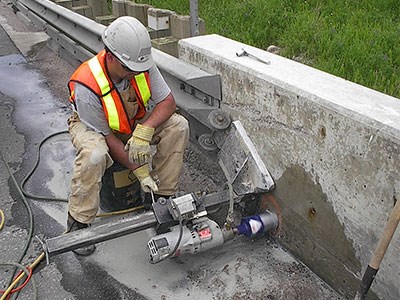Two engineering firms and two First Nations have teamed up on a new venture to better pool their expertise in positioning themselves for future infrastructure activity in northwestern Ontario.
Ozaanaman Engineering is a partnership with TBT Engineering, Saulteaux Consulting and Engineering, Rainy River First Nations and Naicatchewenin First Nation.
After successfully working together on a number of engineering-related projects in the past, the two firms decided to formalize the relationship last fall.
The focus of Ozaanaman is to jointly bid on transportation, mining and alternative energy-related infrastructure projects.
The collaboration will tap into each other’s expertise and professional contacts in the government, industrial and Aboriginal spheres.
“A lot of proposals come across each of our desks that we’re both cognizant of the fact that Ozaanaman is an exceptional opportunity to participate on projects where there’s an advantage that can be gained by having an Aboriginally owned multidisciplinary consulting presence,” said Rob Frenette, president of both TBT and Ozaanaman.
Landmark changes in Ontario regarding the duty to consult and accommodate on natural resources and infrastructure projects have spurred many growth opportunities for Aboriginal business.
In the Treaty 3 communities of the northwest, there is a plethora of resource-related projects for remote communities and their affiliated companies to bid on.
“We started looking for partners in different areas where we don’t have the skill set we need,” said Dean Bethune, principal and CEO of Saulteaux, who acts as Ozaanaman Engineering’s business development manager.
“What TBT brought to the table was their expertise in road construction and environmental projects.”
At 130 employees, Thunder Bay-based TBT is northwestern Ontario's largest independently owned civil engineering and environmental consulting firm involved in structural, mining, transportation, and renewable energy projects.
The firm has a 40 per cent ownership in this new venture.
Saulteaux Consulting is a 14-employee firm based out of Fort Frances and Thunder Bay that specializes in project management and engineering design services on a number of structural projects.
Saulteaux has particular expertise in the Asset Condition Reporting System (ACRS) throughout Ontario. “We’re the biggest contractor for that for First Nations,” said Bethune.
Under the “Oz” banner, Frenette said they’ve been busy bidding on plenty of projects that best fit their combined talents.
“We haven’t got any significant traction in terms of the successful awarding of projects. It’s obviously still in its infancy.”
The impact benefit agreements negotiated today between First Nations and mining companies almost always include stipulations that local skilled labour and contractors will be sourced.
In the Fort Frances area, the big news is the development of New Gold’s Rainy River project.
AMEC is handling the mine engineering, but there are numerous ancillary opportunities such as highway realigning, building access roads, and soils testing sampling and surveys for buildings and tailings management areas.
“From our perspective, we’re doing (design work) on a number of smaller buildings for them,” said Bethune. “New Gold is a great company because they try to keep as much as they can local. They’re really good with First Nation opportunities.”
Although Bethune, Frenette and his wife, Liana (the CEO for Ozaanaman) are all originally from the Fort Frances area, they only met for the first time three years ago soon after Bethune formed Saulteaux with business partner Todd Bruyere in 2010.
“Just after Dean started the company I reached out and said, how about we have a coffee?” said Frenette.
“They have a great reputation and a great business,” said Bethune. “It’s one of the reasons we partnered with them.”
One of the offshoots of Ozaanaman is creating a training platform for Aboriginal young people.
“It’s a huge part of what we’re doing,” said Bethune. “It’s going to be pretty busy in the North in the next few years if mining does take off and we want younger people to participate as much as they can.”




